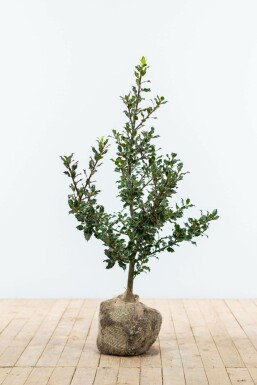
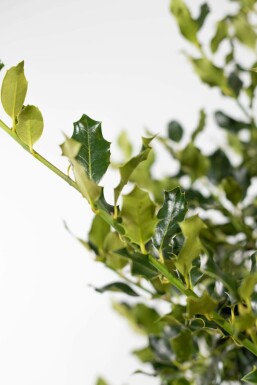




Updated on 10 September 2025
We regret to inform you that we are currently unable to ship orders to the United Kingdom. We anticipate being able to resume shipments at the beginning of 2026.
Ilex is an excellent choice for a garden. Its glossy evergreen foliage provides year-round interest, and the red or black berries attract birds. This hardy plant is versatile, suitable for hedges, topiary, or as a striking standalone feature.






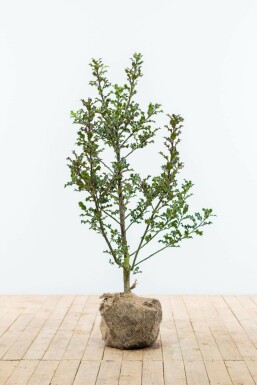
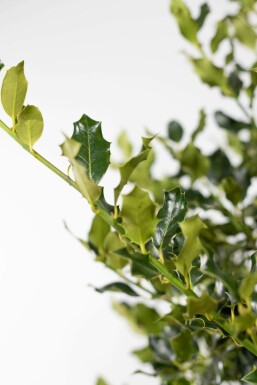




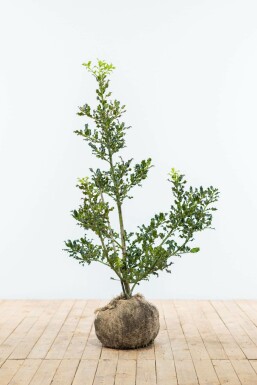
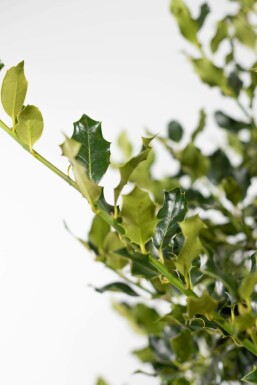




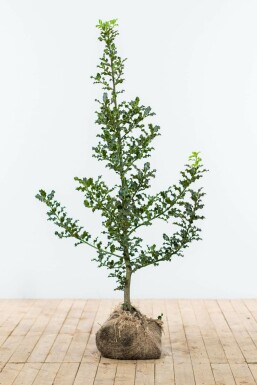
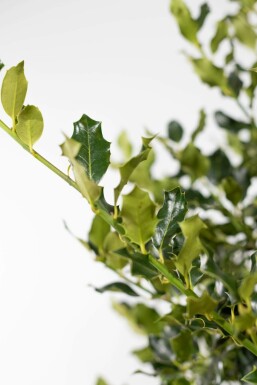




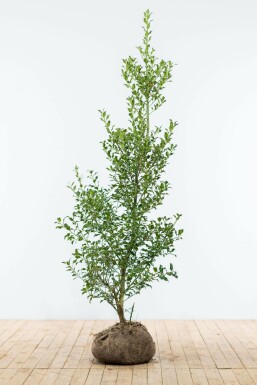
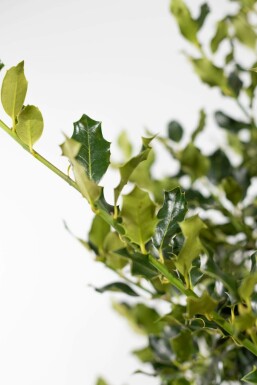




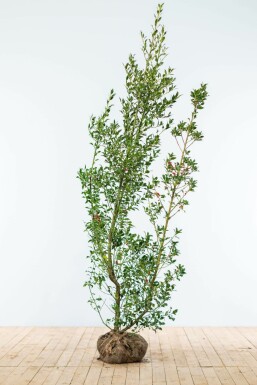
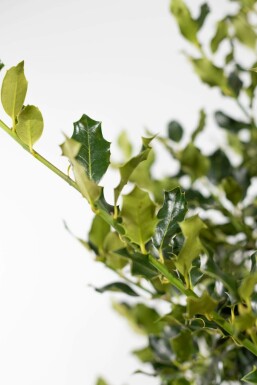




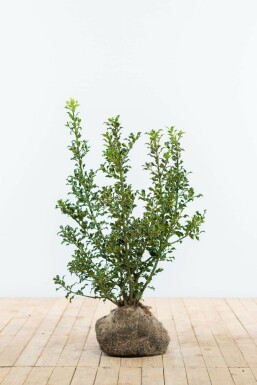
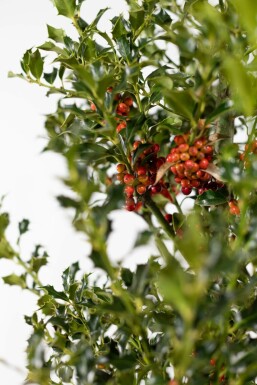




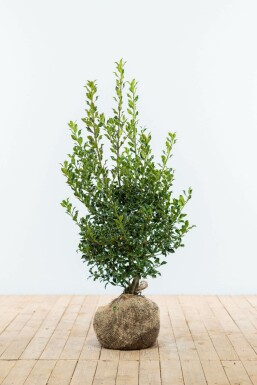
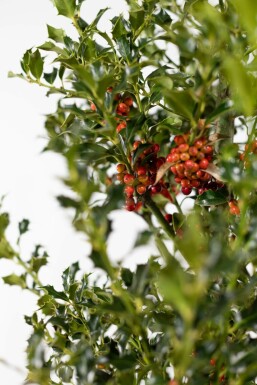




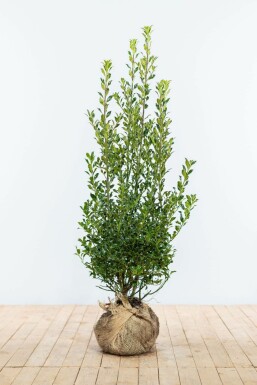
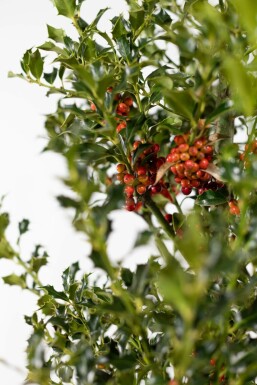




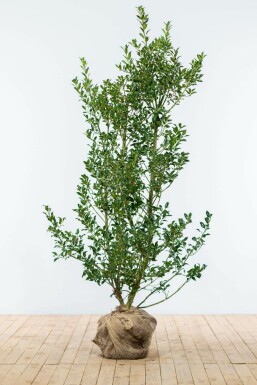
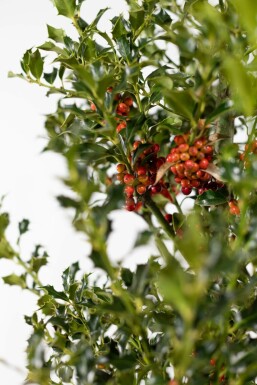




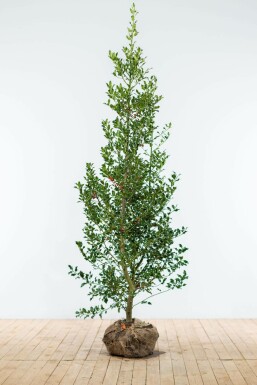
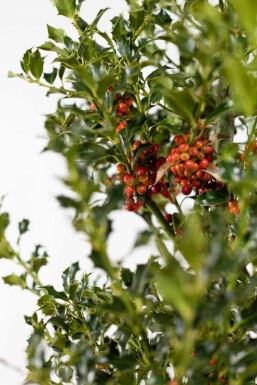




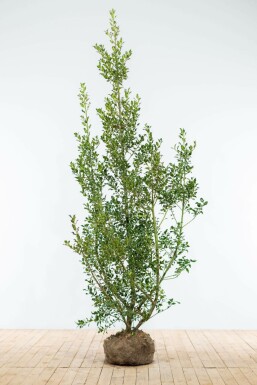
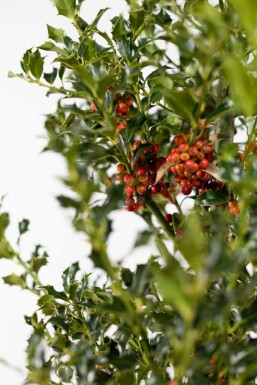




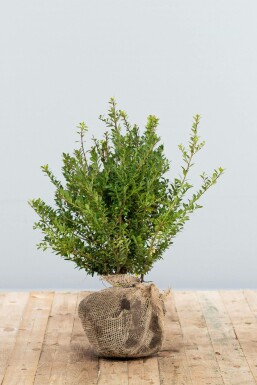
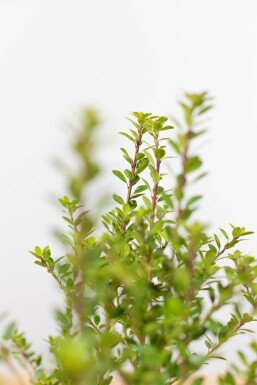




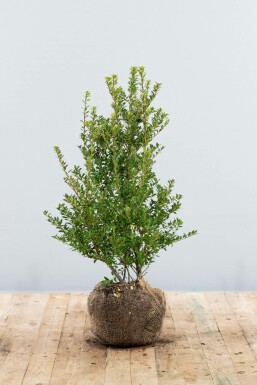
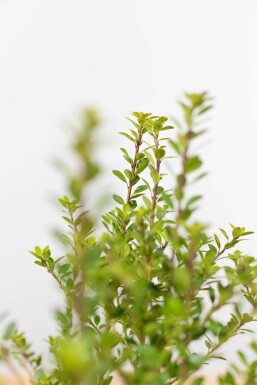




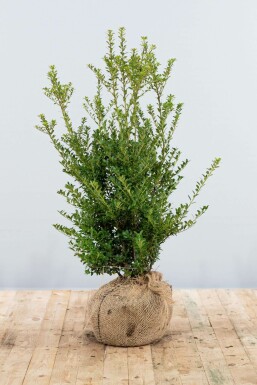
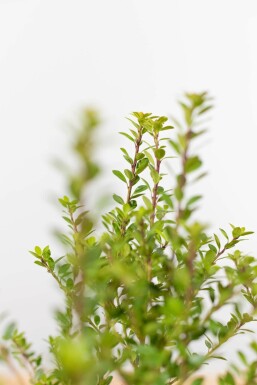




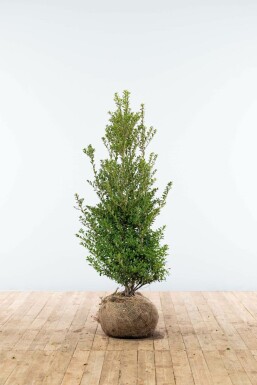
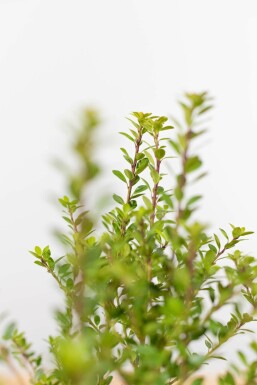




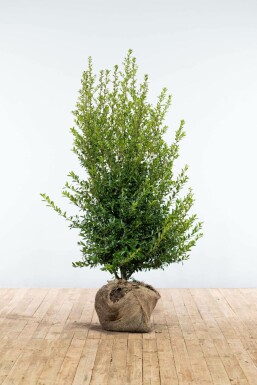
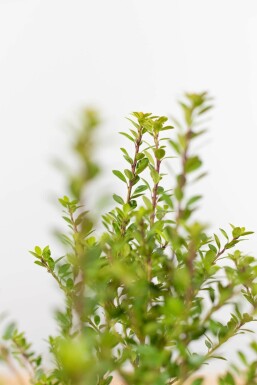





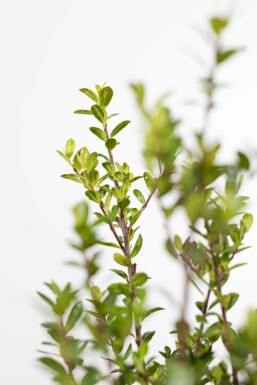




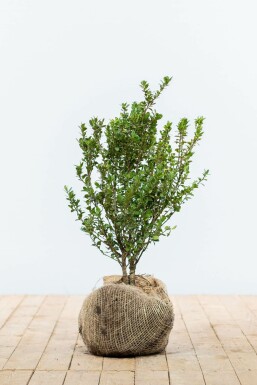
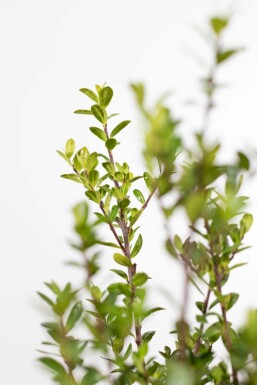





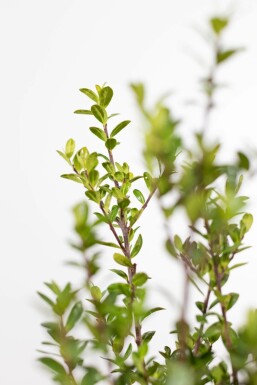




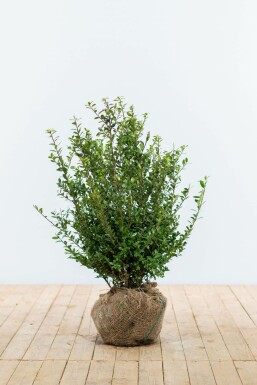
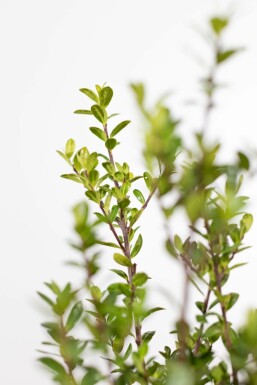





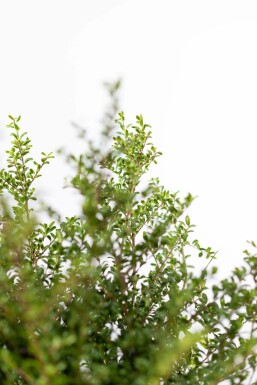





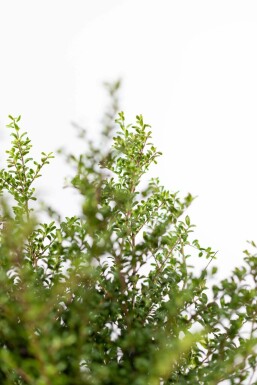





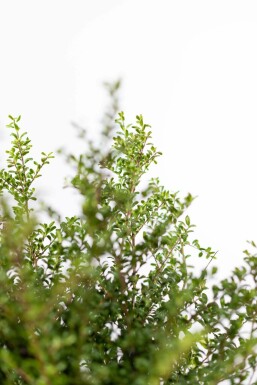




Ilex is a popular choice for gardeners seeking year-round interest. Its dark green glossy leaves and bright red berries add colour to any garden, especially in the colder months. As an evergreen plant, it provides structure and privacy, making it perfect for hedges or as a standalone shrub. Curiosity arises when considering how this plant might enhance a garden. Its potential to attract birds with its fruit and its hardy nature make it versatile. Whether aiming to create a bird-friendly environment or a striking hedge, buying Ilex holly can transform a space. The combination of its ornamental appeal and practicality ensures it remains a favourite plant in many gardens.
Ilex, commonly known as holly, is a versatile plant widely found in gardens. Known for its shiny, spiny leaves and bright red berries, it is often used as a decorative shrub, hedge, or specimen tree. Holly is also known as Ilex shrub, Christmas holly, or evergreen with berries. The name 'holly' derives from its Latin name, which symbolises protection, strength, and rebirth, significant in Celtic, Roman, and Christian traditions, especially at Christmas. Holly is part of the Aquifoliaceae family and is native to regions across Asia, America, and Europe. It thrives in various climates, making it suitable for worldwide garden use. As an evergreen, it plays an important ecological role by providing shelter and food for wildlife, particularly birds in winter. Holly is dioecious, meaning male and female plants are needed for berry production. It grows slowly, making it ideal for hedges or as a standalone feature. Its hardy nature allows it to withstand harsh weather, contributing to its popularity. When considering a new addition to the garden, buying Ilex can enhance a landscape with its year-round interest and wildlife value.
Ilex, known for its dark green glossy leaves and red berries, is an evergreen shrub or tree. It grows slowly, making it suitable as a hedge or a specimen plant. Ilex is very hardy, thriving in different environments. It can be compact or broad-growing, adaptable to both garden and park settings. The development of Ilex begins with its inconspicuous white blooms in May and June. The flowers lead to the development of red or black berries, particularly on female plants. This fruiting occurs from autumn to winter, providing a key wildlife value as a berry plant for birds. Factors like climate, soil quality, and care influence the abundance and health of the berries. Typically, Ilex is prized for its ornamental characteristics. As an evergreen ornamental shrub, it maintains its lush appearance throughout the year. For those interested in creating a structured landscape, Ilex holly hedge is a popular choice. The plant's spiny leaves add texture and can deter unwanted visitors, making it an excellent natural barrier. The mature height of Ilex varies substantially, ranging from 1 to 25 metres depending on the species. This variability allows for its use as both a small garden shrub and a towering feature tree. The Ilex is an evergreen hedge plant with red berries and spiky foliage. Its adaptability and resilience make it a valuable addition to any garden.
Ilex, known for its diverse leaf shapes, can have oval, spiny, or entire leaves. These leaves are glossy and come in dark green or variegated shades like yellow-green or white-green, especially in cultivars. The leathery texture of Ilex leaves helps reduce water loss and protects against browsing. Ilex tolerates pruning well, making it ideal for shaping hedges or topiary. It also withstands shade, cold, and wind, providing flexibility in garden placement. Regarding winter hardiness, Ilex is suitable for USDA zone 4 to 6, tolerating temperatures from -34°C to -23°C. Some species are evergreen, meaning they keep their leaves all year, while others drop them in winter. The choice between deciduous and evergreen varieties depends on personal preference and climate conditions. Ilex is generally evergreen, making it a popular choice for winter interest. Factors like climate and location affect whether it retains its leaves. In hot climates, the plant shows remarkable heat and drought resistance, thanks to its leathery leaf structure and deep root system which help conserve water. While Ilex can be mildly toxic if ingested by pets or children, it is typically safe with proper garden use. In terms of biodiversity, Ilex supports wildlife with its glossy, sometimes spiny foliage and berries, providing food and shelter. The berries, found on female plants, enhance its ornamental and ecological value, particularly in winter. Consider options like the best female Ilex for berries UK to maximize garden biodiversity benefits.
Ilex, commonly used in gardens for its evergreen beauty and vibrant berries, is a versatile choice for both decorative and practical applications. This plant is ideal for creating a natural aesthetic in various garden types throughout the year.
Ilex is a versatile plant that can enhance a garden with its evergreen qualities. A great way to make Ilex stand out is to combine it with other plant types. Taxus is a perfect match, as it also provides year-round greenery and can be shaped into hedges or topiary. Buxus is another good choice, offering a neat small-leaf look that pairs well with the larger leaves of Ilex. Euonymus adds a splash of colour with its variegated leaves, creating visual interest next to the deep green of Ilex. Skimmia, with its fragrant flowers, and Osmanthus, known for its sweet scent, are excellent for adding aromatic value. Together, these plants create a textured look that is both visually pleasing and harmonious. These plant combinations with Ilex work well because they enhance each other's characteristics. Ilex forms a dense structure and is highly suitable as a burglary-resistant hedge. Taxus and Buxus offer strong structure, while Euonymus brightens up the garden with its diverse colours. Skimmia and Osmanthus provide added sensory appeal. Additionally, Ilex is a berry plant for birds, attracting wildlife and adding life to the garden. Using Ilex with these companions ensures an evergreen ornamental shrub display throughout the year.
Ilex, also known as holly, prefers semi-shade to full sun. It needs at least 4 to 6 hours of sunlight each day for healthy growth. This plant can tolerate some shade, but too much can limit its berry production. Wind sensitivity is not a major issue for Ilex due to its tough leaves that reduce evaporation and browsing. However, providing a windbreak can still be beneficial in very exposed areas. For soil, Ilex grows best in well-drained, nutrient-rich loam. A slightly acidic to neutral pH is ideal, promoting vigorous growth. Regular fertilisation enhances its health. The soil should remain moist, so watering during dry spells is important, especially if the plant is in a sunny spot. Overexposure to wind can dry out the soil quickly, thus regular checking and watering might be required. Ilex prefers a soil pH of slightly acidic to neutral, which helps in maintaining its lush foliage and vibrant berries. Adjusting soil pH can be necessary in some areas, using amendments like sulphur for acidity. Overall, ensuring the right light, soil, and moisture conditions will allow Ilex, the evergreen with berries, to flourish effectively.
Plant Ilex in autumn or spring for the best results. For potted Ilex, planting can be done year-round, except during frost. Ilex with a root ball should ideally be planted in autumn or spring. The distance between plants affects the growth of Ilex shrubs. Consider the species, initial size, and growth rate. The recommended number of plants per metre is available on the Heijnen product page. Prepare the soil well by ensuring it is moist, well-draining, and slightly acidic. Using Heijnen planting soil can be beneficial. During planting, ensure the Ilex is placed in a position where it can receive semi-shade to full sun, with at least 4-6 hours of sunlight daily. Water the Ilex thoroughly after planting and consider using compost to enrich the soil. Ilex shrubs require moderate watering and occasional fertilisation to thrive. Regular pruning helps maintain the shape and encourages dense growth, making Ilex an ideal choice for an evergreen ornamental shrub or berry plant for birds.
Ilex is a popular choice for a garden because of its evergreen nature and the vibrant berries it produces. Proper care is essential to maintain its beauty and health. Here are some tips to ensure your Ilex thrives.
Ilex, known for its glossy dark green leaves and bright red berries, is a striking addition to any garden. The leaves are often spiny, adding a unique texture that attracts attention throughout the year. Holly is a spiny evergreen hedge that offers privacy. Birds are drawn to the berries, which provide an essential food source in the colder months. The Ilex shrub not only serves as a beautiful ornamental feature but also supports wildlife, offering shelter and nourishment. In spring, the holly bears small white flowers, which are not very conspicuous. These later develop into the famous red or black berries found on female plants. Ilex is evergreen, maintaining its lush foliage all year round, making it an excellent choice for hedges or solitary placement in the garden. This resilient plant is easy to shape and care for, ensuring it remains a favourite for creating privacy screens and topiary art. Ilex holly hedge is also highly valued for its eco-friendly benefits, supporting both beauty and biodiversity in any outdoor space.
Ilex, commonly known as holly, is a popular choice for gardens and hedges in the UK. Known for its evergreen qualities and winter berries, holly adds value and interest to any outdoor space. Many types of Ilex serve different functions, whether you're looking for berry shrubs or trees, or hedges with spiny leaves to add structure and wildlife value to your garden. Here are some popular Ilex varieties that are favoured for their unique characteristics:
Ilex is well known for its role in gardens as a decorative plant. It adds colour and structure to any space, especially during winter. Here are some advantages and disadvantages to think about when considering Ilex for your garden:
Advantages:
Disadvantages:
Proper soil preparation, correct placement, and timely care and fertilisation can reduce the risk of diseases and pests. Ensuring good care helps Ilex (holly) thrive in any garden setting.
Ilex offers a timeless charm for any garden. Known for its resilience, Ilex plants are perfect for creating evergreen hedges or a striking solitary shrub. These shrubs are ideal for bird-friendly gardens, thanks to their berries that provide a winter feast. When considering your purchase, think about the placement. Ilex can be shaped easily, making it a versatile choice for topiary or as a feature plant. Its spiny leaves and evergreen qualities make it a favourite for year-round interest in gardens across the UK.
The benefits of Ilex are plentiful. Its strong evergreen nature ensures a lush appearance all year. Ilex is bird-friendly, attracting wildlife during colder months with its vibrant berries. The plant's hardiness means it withstands various weather conditions, keeping your garden looking fresh. For those seeking a traditional touch, Ilex can be a seamless addition to any landscape design.
Order your spiky yet graceful Ilex (Holly) now from Heijnen and add evergreen structure and festive berries to your garden.
We would like to provide some tips on how to plant and care for a Ilex. By following these tips, you can be sure to enjoy your Ilex for a long time.
Ilex thrives best in nutrient-rich, moist loam soil with a slightly acidic to neutral pH. It is important to provide a well-drained area that receives at least 4-6 hours of sun daily. A location sheltered from strong winds will enhance its growth. The right spot ensures healthy, vibrant leaves and richer blooms. It is suitable for planting as a hedge, specimen shrub, or in pots and planters, fitting well in natural and park gardens. Ilex's leathery leaves help to reduce evaporation, making it adaptable to different conditions. The plant can tolerate shade, cold, and even pruning. Autumn and spring are ideal times to plant holly. Planting in the right spot is crucial for the plant's robust growth and resistance. This careful positioning will result in a healthier Ilex, with better overall appearance and resilience.
Proper soil preparation is key when planting Ilex. Start by ensuring the soil is well-drained and slightly acidic to neutral. Loosen the soil and mix in organic materials like compost. This enhances soil aeration and helps water absorption, which is vital for plant growth. It’s important to properly prepare the ground before planting holly, as this sets the stage for successful growth. Pot-grown Ilex can be planted year-round, avoiding frost periods. If using root-ball plants with burlap, plant them with the burlap intact, ideally in spring or autumn. Post-planting, water regularly until the roots are well-established. The size of the Ilex at planting will determine how many plants are needed per square metre. These steps help ensure that Ilex, a resilient evergreen with berries, thrives in your garden.
Fertilising Ilex is crucial for its growth and health. Proper nutrition ensures vibrant foliage and a robust structure. Fertilisation in spring and summer encourages holly to produce lush leaves and berries. Using organic or organic-mineral fertilisers from Heijnen enhances the plant's vitality, supporting vigorous growth and rich blooms. It's important to apply fertiliser twice a year, in spring and summer. For Ilex, the amount of fertiliser depends on the plant's size. A general rule is a light application around the base. Fertilisers are absorbed once watered in, so in dry conditions, watering the garden helps release nutrients into the soil. This ensures roots take up essential elements for growth. Regular care maintains Ilex’s beauty and health throughout the seasons.
Pruning Ilex is important for keeping the plant healthy and well-shaped. Female Ilex plants produce berries, which attract wildlife and add visual interest. It's advisable to prune Ilex in spring or after it flowers. This timing encourages healthy growth and helps maintain the desired shape. Ilex can be shaped again in June and possibly in September, especially for hedging purposes. Pruning helps remove dead branches and those that disrupt the overall appearance. Using sharp secateurs ensures clean cuts, reducing the risk of damage. Proper tools are crucial for effective pruning, as they make the task easier and promote plant health. Regular maintenance and proper pruning techniques support the plant's growth, leading to a robust and attractive addition to the garden.
Ilex, a popular choice for gardens, requires moderate watering. Young plants need extra attention, especially in dry spells, to establish roots. Once rooted, Ilex only needs water during prolonged droughts. Watering deeply is more effective than daily light watering. Early morning or late afternoon are the best times to water, as less water evaporates. Checking the soil ensures the plant really needs water. Excess water should always drain away, whether Ilex grows in the ground or in a pot. Drip systems are effective once Ilex is well-rooted, but additional watering is necessary initially. Mature Ilex specimens have moderate to good drought tolerance, making them resilient in dry conditions. Regular observation and proper watering habits help maintain healthy Ilex growth, ensuring this evergreen adds beauty to any garden.
Ilex, often used in gardens, is known for its glossy leaves and vibrant berries, making it a popular choice for year-round interest. The plant holds a strong place in cultural traditions, symbolising protection and strength. Being evergreen, it provides a constant green presence, perfect for hedges or as a standout piece. Ilex is admired for its ability to attract birds with its berries. It's a versatile and hardy plant, suitable for various garden designs.
Ilex, commonly known as holly, is typically propagated through cuttings or seeds. Dividing is not common for this plant. Propagation helps rejuvenate the plant and maintain its growth. Old parts can be removed during this process, providing space for new growth. Propagation ensures that the plant continues to thrive year after year. To propagate, take cuttings from healthy branches in late spring or summer. Plant these in pots with well-draining soil. Ensure regular watering but avoid waterlogging. Division is not recommended, so focus on cuttings for successful propagation. A clean, sharp knife or secateurs are best for taking cuttings. This method ensures healthy new growth and helps preserve this beautiful plant in gardens.
Holly is a strong evergreen plant, perfect for hedges or as a specimen in the garden. With its dark green glossy leaves and red berries, it provides essential food for birds during winter. This hardy plant is easy to shape and maintain, making it ideal for bird-friendly designs. Enhance your garden with the beauty and ecological value of Ilex. Order your spiky yet graceful Ilex (Holly) now from Heijnen and add evergreen structure and festive berries to your garden.
